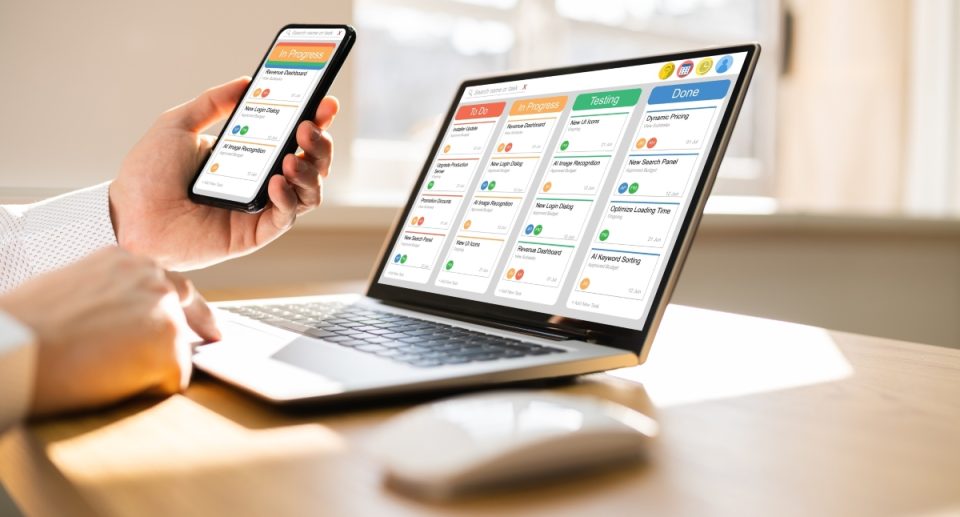
As the financial landscape continues evolving, seniors increasingly seek alternative investment opportunities to diversify their portfolios and enhance their income streams. Peer-to-peer (P2P) lending has emerged as a popular option, allowing individuals to lend money directly to borrowers through online platforms. This guide will provide seniors with the information they need to navigate P2P lending platforms, offering insights into investing wisely and managing risks effectively.
1. Understanding Peer-to-Peer Lending

Peer-to-peer lending is a method of financing that enables individuals to lend and borrow money without going through traditional financial institutions like banks. P2P lending platforms act as intermediaries, connecting borrowers with investors willing to fund their loans.
A. How P2P Lending Works
- Borrowers Apply for Loans: Individuals or businesses seeking loans submit applications to P2P lending platforms, specifying the amount they need and the purpose of the loan.
- Credit Assessment: The platform conducts a credit assessment to evaluate the borrower’s creditworthiness and determines the interest rate based on their risk profile.
- Investors Fund Loans: Investors can browse available loans and choose which ones to fund, contributing varying amounts to different loans to diversify their investments.
- Repayment: Borrowers make regular payments (including interest) over the life of the loan. The platform collects these payments and distributes them to the investors.
B. Benefits of P2P Lending
- Higher Returns: P2P lending often offers higher interest rates than traditional savings accounts and fixed-income investments, making it an attractive option for income-focused investors.
- Diversification: By investing in multiple loans, investors can spread their risk and potentially increase their overall returns.
- Social Impact: Many P2P lending platforms focus on helping individuals or small businesses achieve their goals, allowing investors to support meaningful projects while earning returns.
2. Choosing the Right P2P Lending Platform

Selecting the right P2P lending platform is crucial for your success as an investor. Here are some key factors to consider when evaluating different platforms:
A. Reputation and Track Record
- Research Platform History: Look for platforms with a solid reputation and a proven track record of successful lending. Read reviews and testimonials from other investors.
- Regulatory Compliance: Ensure the platform complies with relevant regulations and operates transparently. Check for any licenses or registrations.
B. Loan Variety
- Types of Loans Offered: Different platforms may specialize in various types of loans, such as personal loans, small business loans, or student loans. Choose a platform that aligns with your investment preferences.
- Risk Profiles: Review the risk profiles of the loans offered on the platform. Some platforms allow you to invest in higher-risk loans with potentially higher returns, while others focus on safer, lower-yield options.
C. Fees and Charges
- Understand the Fee Structure: Evaluate the platform’s fees, including origination fees, servicing fees, and any other charges that may affect your returns.
- Transparency: Choose a platform that provides clear and transparent information about its fee structure and potential impacts on your investments.
3. Assessing Risk and Return

Investing in P2P lending involves risk, and it’s essential to understand how to assess both the risks and potential returns before committing your funds.
A. Risk Factors
- Default Risk: The primary risk in P2P lending is borrower default, where borrowers fail to make their payments. Diversifying your investments across multiple loans can help mitigate this risk.
- Platform Risk: If the P2P lending platform faces financial difficulties or goes out of business, you may encounter challenges in collecting your loan repayments. Choose reputable platforms with a solid track record to minimize this risk.
- Economic Conditions: Economic downturns can impact borrowers’ ability to repay loans, leading to higher default rates. Consider how broader economic factors may affect your investments.
B. Potential Returns
- Interest Rates: The interest rates on P2P loans vary based on the borrower’s creditworthiness and the platform’s policies. Higher-risk loans typically offer higher interest rates, but they also come with increased risk.
- Expected Returns: Review the platform’s historical performance and average returns to set realistic investment expectations. Remember that past performance is not always indicative of future results.
4. Creating Your P2P Lending Portfolio

Once you’ve selected a P2P lending platform, it’s time to create a well-balanced investment portfolio. Here’s how to get started:
A. Set Investment Goals
- Determine Your Objectives: Define your investment goals, such as generating income, preserving capital, or diversifying your portfolio. Understanding your objectives will guide your investment strategy.
- Consider Your Risk Tolerance: Assess your comfort level with risk. This will help you decide how much to invest in higher-risk loans versus safer options.
B. Diversify Your Investments
- Invest in Multiple Loans: Spread your investment across different loans to reduce the impact of any single borrower defaulting. Many experts recommend investing small amounts in 20 to 30 loans to achieve proper diversification.
- Vary Loan Types: Consider investing in a mix of loan types and risk profiles to further diversify your portfolio. This can help balance potential returns with risk.
C. Monitor and Adjust Your Portfolio
- Track Performance: Regularly monitor the performance of your loans and the overall health of your portfolio. Most P2P lending platforms provide tools to track your investments easily.
- Rebalance as Needed: If certain loans underperform or if your investment goals change, be prepared to adjust your portfolio by reallocating funds or diversifying further.
5. Understanding Tax Implications

As a senior investor, it’s essential to understand the tax implications of your P2P lending investments.
A. Taxation on Earnings
- Interest Income: The interest earned on P2P loans is typically considered taxable income. Be prepared to report this income on your tax return.
- Losses and Write-offs: If a borrower defaults on a loan, you may be able to write off the loss for tax purposes. Keep detailed records of your investments to support any claims.
B. Consult a Tax Professional
- Seek Guidance: Consult a tax professional or financial advisor who understands P2P lending and can help you navigate the tax implications specific to your situation.
- Stay Informed: Tax laws can change, so it’s crucial to stay informed about any updates that may affect your investments and overall financial strategy.
6. Getting Started with P2P Lending

Now that you have a solid understanding of P2P lending and how to navigate the investment landscape, here’s how to get started:
A. Research Platforms
- Compare Options: Take the time to research and compare different P2P lending platforms based on the factors mentioned earlier.
B. Open an Account
- Sign Up: Once you’ve chosen a platform, create an account and complete the necessary verification steps. This may involve providing personal information and financial details.
C. Fund Your Account
- Deposit Funds: Transfer money into your account to start investing. Be mindful of your budget and only invest funds you can afford to tie up for the loan term.
D. Start Investing
- Select Loans: Browse the available loan listings and select the ones that align with your investment goals and risk tolerance.
- Monitor and Adjust: As you gain experience, continue to monitor your investments and make adjustments as needed to optimize your portfolio.
Conclusion
Peer-to-peer lending offers seniors a unique opportunity to diversify their investment portfolios and earn potentially higher returns. By understanding the mechanics of P2P lending, carefully selecting platforms, and creating a well-balanced portfolio, seniors can navigate this investment landscape effectively. Embrace the potential of P2P lending to enhance your financial future, but remember to approach it with caution and diligence. Start exploring today and take charge of your investment journey!





